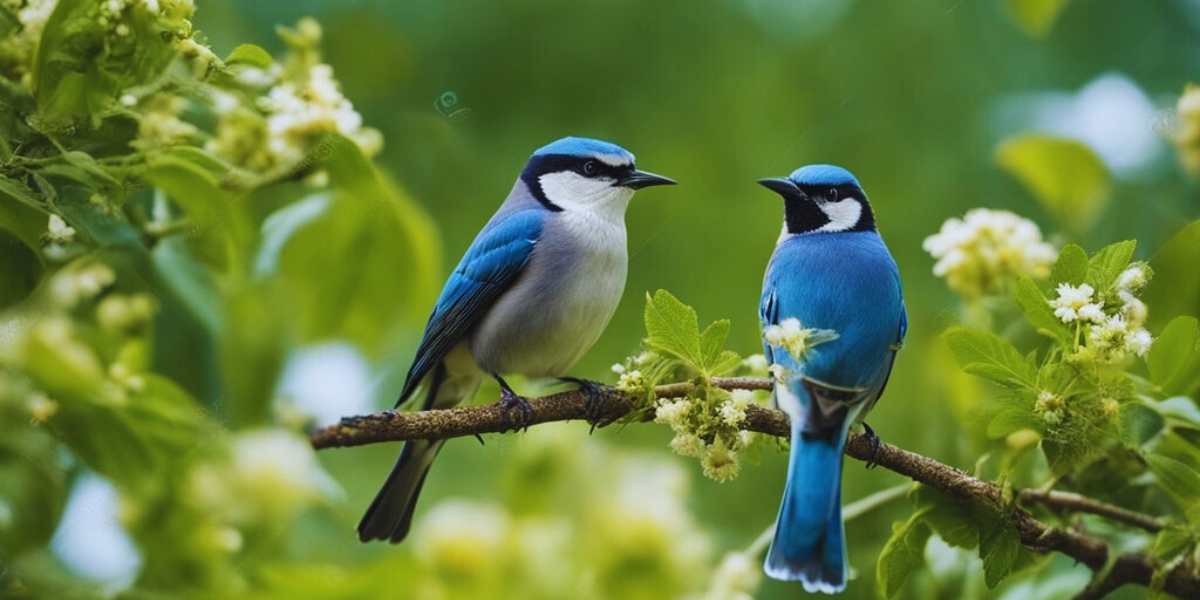Birds are fascinating creatures that come in all shapes and sizes, and their diets are just as diverse. From tiny hummingbirds that sip nectar to large birds of prey that hunt small animals, there’s something for everyone in the bird world. In this comprehensive guide, we’ll explore what birds eat in the wild, the factors that affect their diet, and the adaptations that allow them to thrive on a variety of foods.
Seeds
Seeds are a staple food for many birds, providing them with essential nutrients like carbohydrates, proteins, and fats. There are many different types of seeds, each with its own unique nutritional profile. Some common types of seeds that birds eat include:
- Sunflower seeds
- Safflower seeds
- Millet seeds
- Canary seeds
- Chia seeds
- Flax seeds
The nutritional value of seeds varies depending on the type of seed, but they are generally a good source of energy, protein, and fiber. They also contain vitamins and minerals like calcium, iron, and magnesium.
Birds find seeds in a variety of ways. Some birds, like sparrows and finches, search for seeds on the ground. Others, like woodpeckers and nuthatches, search for seeds in trees. And still others, like crossbills and grosbeaks, have specialized beaks that allow them to extract seeds from cones.
Fruits
Fruits are another important food source for birds. They provide birds with essential vitamins, minerals, and antioxidants. Some common types of fruits that birds eat include:
- Berries
- Apples
- Oranges
- Bananas
- Grapes
- Melons
The nutritional value of fruits varies depending on the type of fruit, but they are generally a good source of vitamins A, C, and E. They also contain fiber and minerals like potassium and magnesium.
Birds find fruits in a variety of ways. Some birds, like robins and bluebirds, eat fruits that are growing on trees and shrubs. Others, like crows and jays, eat fruits that have fallen to the ground. And still others, like vultures and eagles, eat fruits that are part of the carcasses of animals they have killed.
Insects
Insects are a major food source for birds, especially during the spring and summer months when insects are abundant. Insects provide birds with essential proteins, fats, and minerals. Some common types of insects that birds eat include:
- Caterpillars
- Grasshoppers
- Crickets
- Flies
- Beetles
- Ants
The nutritional value of insects varies depending on the type of insect, but they are generally a good source of protein, fat, and vitamins. They also contain minerals like calcium, iron, and magnesium.
Birds find insects in a variety of ways. Some birds, like flycatchers and swallows, catch insects in the air. Others, like warblers and vireos, search for insects on leaves and branches. And still others, like woodpeckers and nuthatches, search for insects under bark and in crevices.
Nectar
Nectar is a sugary liquid produced by flowers. It is a major food source for some birds, especially hummingbirds. Nectar provides birds with essential energy and carbohydrates. Some common types of flowers that produce nectar include the following:
- Honeysuckle
- Butterfly bush
- Salvia
- Bee balm
- Lantana
- Petunia
The nutritional value of nectar varies depending on the type of flower, but it is generally a good source of energy and carbohydrates. It also contains vitamins and minerals like potassium and magnesium.
Birds find nectar in a variety of ways. Some birds, like hummingbirds, have long, thin beaks that allow them to reach deep into flowers to extract nectar. Others, like bees and butterflies, have specialized mouthparts that allow them to suck nectar from flowers.
Small Animals
Some birds eat small animals, such as rodents, reptiles, and amphibians. These foods provide birds with essential proteins, fats, and minerals. Some common types of small animals that birds eat include:
- Mice
- Voles
- Shrews
- Lizards
- Snakes
- Frogs
The nutritional value of small animals varies depending on the type of animal, but they are generally a good source of protein, fat, and vitamins. They also contain minerals like calcium, iron, and magnesium.
Birds find small animals in a variety of ways. Some birds, like hawks and owls, hunt small animals from the air. Others, like eagles and vultures, scavenge small animals that are already dead. And still others, like herons and egrets, wade through shallow water in search of small animals.
Factors Affecting a Bird’s Diet
There are a number of factors that can affect a bird’s diet, including:
Habitat:
The type of habitat a bird lives in can affect its diet. For example, birds that live in forests are likely to eat different foods than birds that live in grasslands.
Season:
The season can also affect a bird’s diet. For example, many birds eat more insects during the spring and summer months, when insects are abundant.
Availability of food:
The availability of food can also affect a bird’s diet. For example, birds that live in areas with a lot of food are likely to have a more varied diet than birds that live in areas with less food.
Competition:
Competition from other birds can also affect a bird’s diet. For example, birds that live in areas with a lot of other birds are likely to have a more restricted diet than birds that live in areas with fewer other birds.
Predation:
Predation can also affect a bird’s diet. For example, birds that are preyed upon by other animals are likely to be more selective about the foods they eat.
Adaptations for Different Diets
Birds have a number of adaptations that allow them to thrive on a variety of foods. These adaptations include:
Beaks
Birds’ beaks come in a variety of shapes and sizes, each adapted for a different type of diet. For example, birds that eat seeds have strong, short beaks that are good for cracking seeds. Birds that eat fruits have long, thin beaks that are good for reaching into fruits. And birds that eat insects have long, slender beaks that are good for catching insects.
Digestive Systems
Birds’ digestive systems are also adapted for different types of diets. For example, birds that eat seeds have a long, muscular gizzard that helps them grind up seeds. Birds that eat fruits have a short, simple digestive system that is good for digesting fruits. And birds that eat insects have a long, coiled digestive system that is good for digesting insects.
Behavior
Birds’ behavior can also be adapted for different types of diets. For example, birds that eat seeds often spend their time foraging on the ground. Birds that eat fruits often spend their time perching in trees and shrubs. And birds that eat insects often spend their time flying around in search of insects.
People Also Read:
Conclusion
The diet of birds is incredibly diverse, and there is something for everyone in the bird world. From tiny hummingbirds that sip nectar to large birds of prey that hunt small animals, there are birds that eat seeds, fruits, insects, nectar, and even small animals. The factors that affect a bird’s diet include its habitat, season, availability of food, competition, and predation. Birds have a number of adaptations that allow them to thrive on a variety of foods, including their beaks, digestive systems, and behavior.

